Tourist attractions and points of interest
Nuremberg
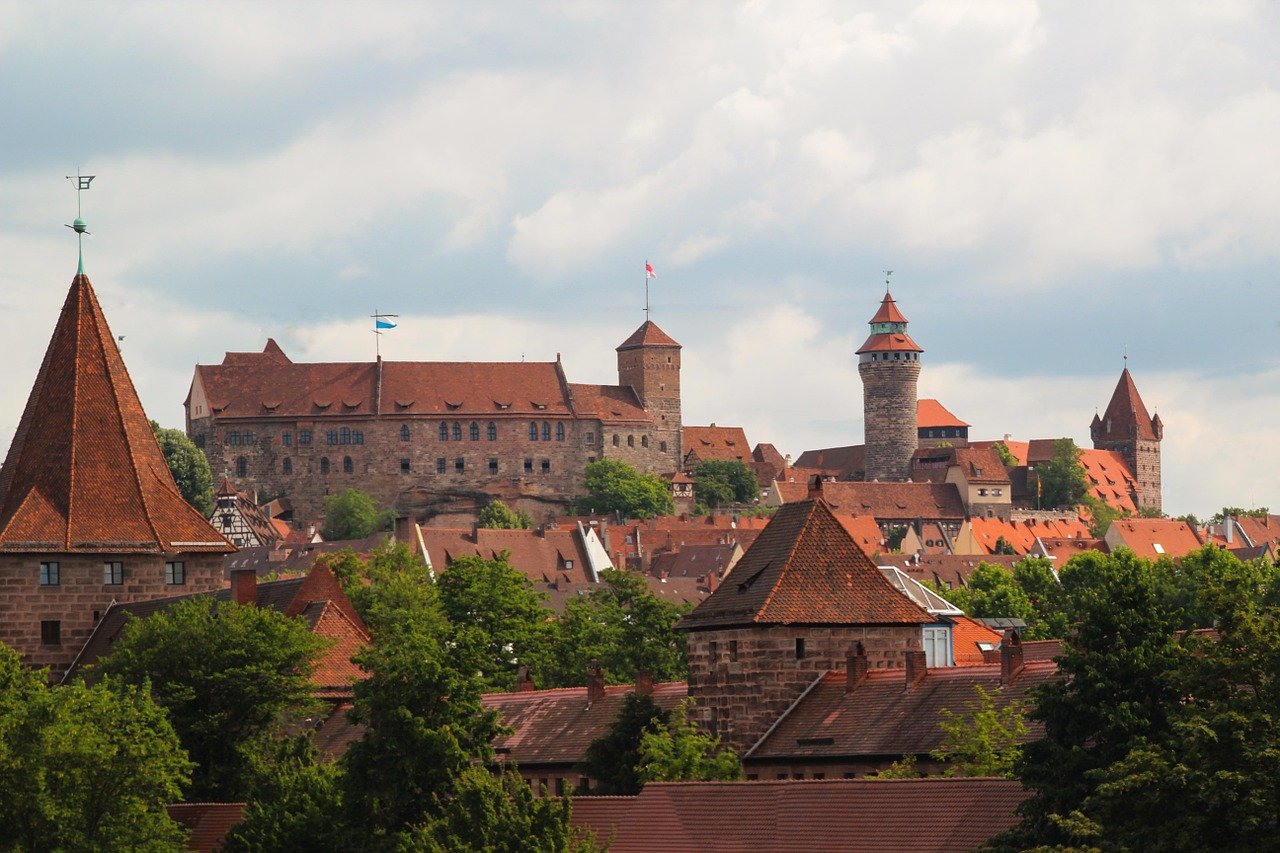
Image from Gerhard G. at Pixabay
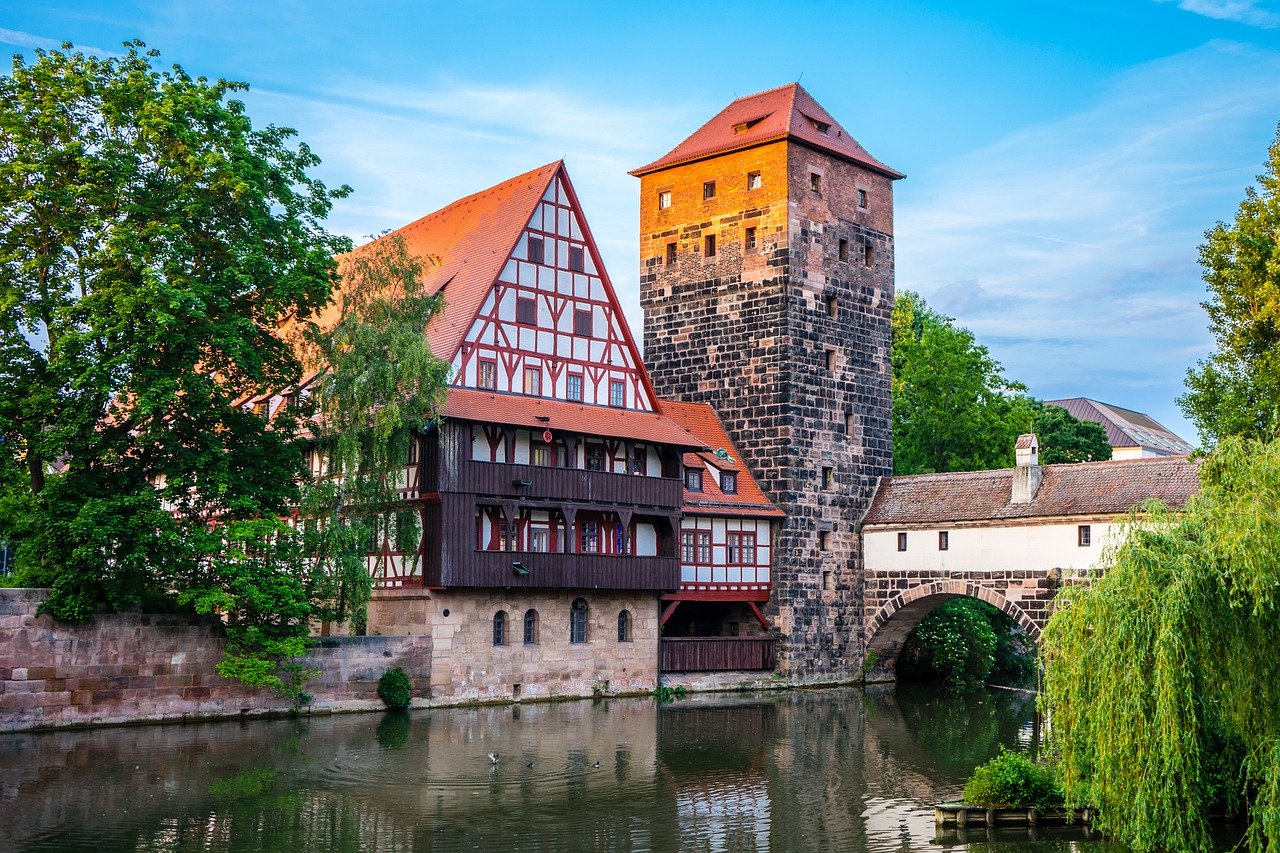
Image from Leonhard Niederwimmer at Pixabay

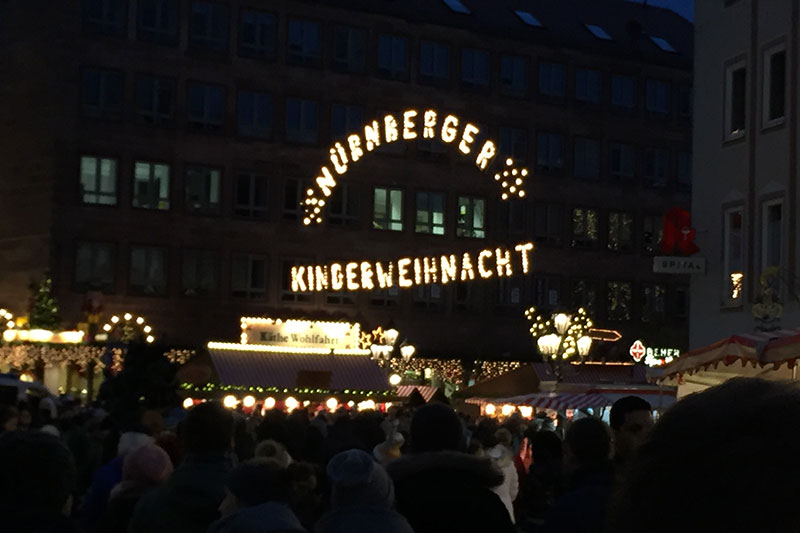
Images from Sibylle Sauer
The city of trade fairs and Albrecht Dürer (in Franconian „Nämbärch“ – try to pronounce this!)
(about 25 km by car / 20 minutes by train)
The metropolis and historical town Nuremberg – also called Noris – was first mentioned in a document in 1050 AD. Out of a small hamlet around what is today the Hauptmarkt (main market) grew a marvellous and venerable old town with the Kaiserburg sitting enthroned high above the heart of the city. Besides old town and Kaiserburg Nuremberg offers a lot more interesting and attractive sights, all of them comfortably approachable by the well developed public transport network (https://www.vgn.de) erreichbar sind.
Cultural attractions:
But have a look yourself with the following links, what Nuremberg offers you:
Bamberg
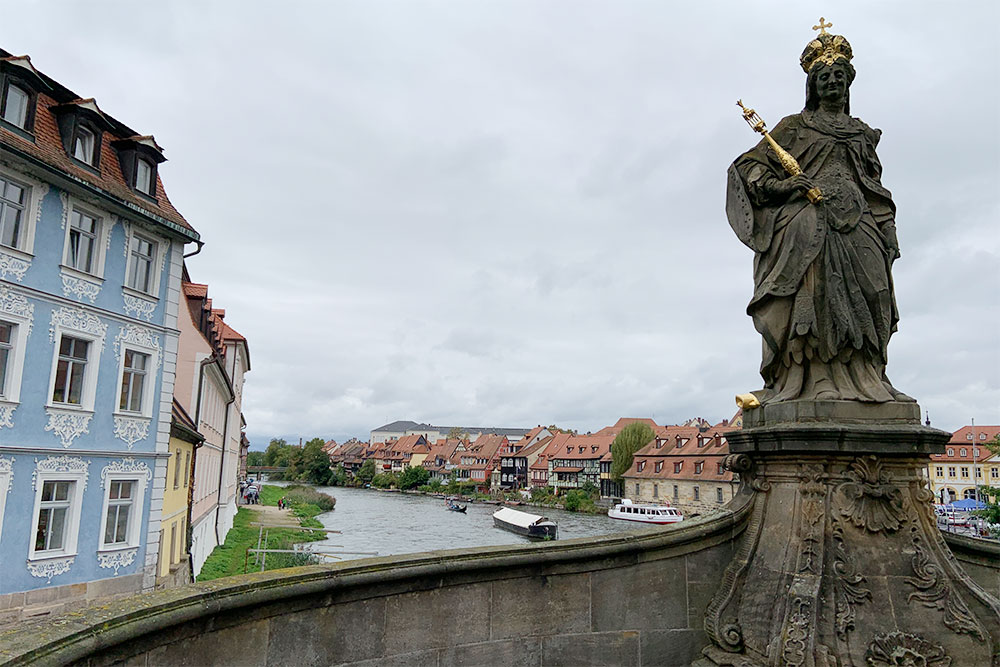
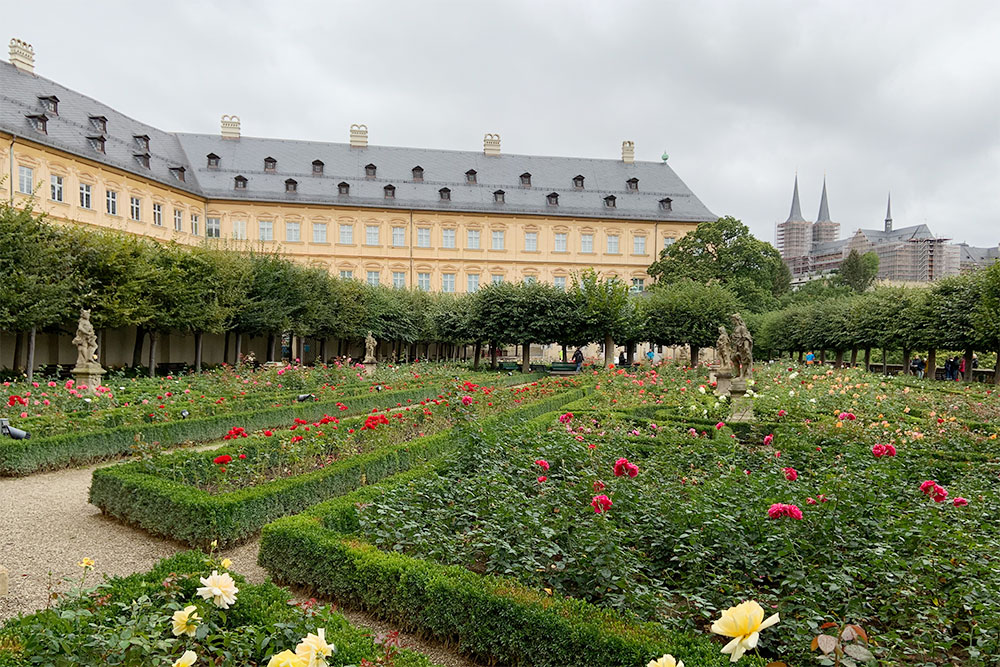
Images from Jochen Schwarzkopf
Cathedral and dome city
(about 95 km by car / 1 hour by train)
The Upper Franconian Bambärch, as it is pronounced in the vernacular, has been a diocese and a cathedral city since 1007 AD. Besides the cathedral the old town of Bamberg is the largest historic city centre in Germany that has remained undamaged. Therefore it was admitted to the UNESCO list of World Cultural Heritage.
Besides the historic buildings Bamberg is also renowned for its large number of private breweries, including the world famous smoked beer Schlerkerla.
The following links show a glimpse of Bamberg:
The Franconian Lakelands
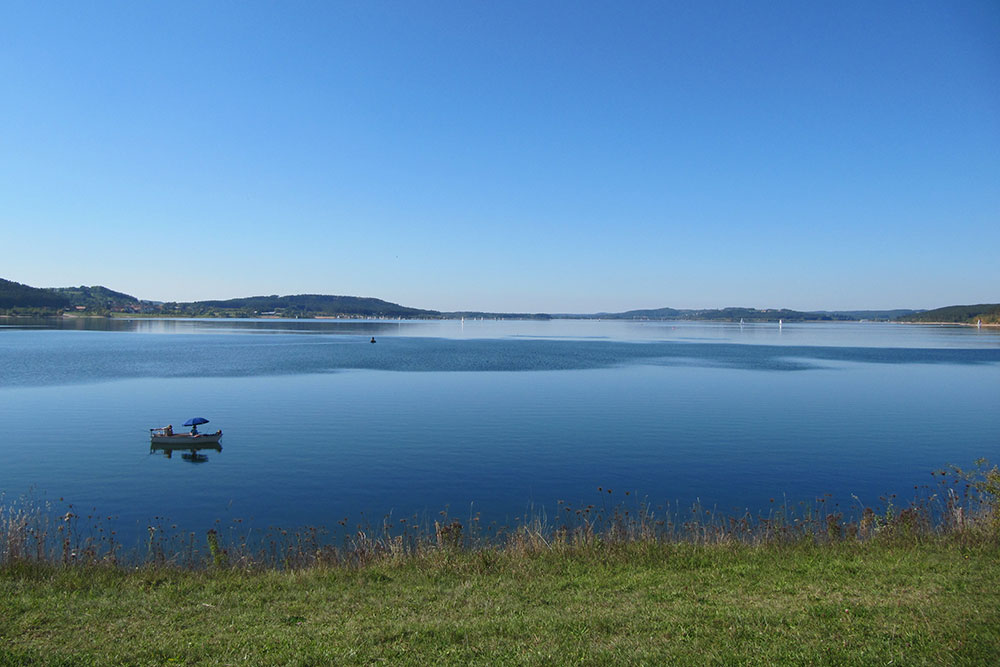
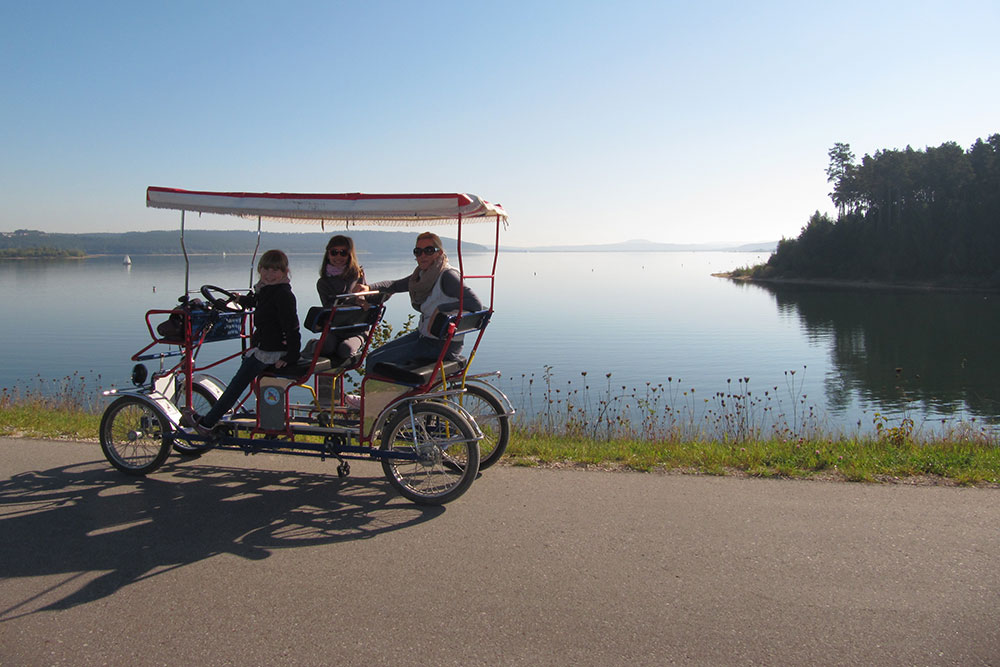
Images from Jochen Schwarzkopf
Rothsee, Brombachseen, Altmühlsee
(Rothsee 19 km | Brombachseen 33 km | Altmühlsee 53 km)
The Franconian Lakelands (Fränkisches Seenland) are located south-west of Nuremberg and about 25 km away from Rednitzhembach. Besides the Rothsee the Brombachseen, the Altmühlsee and three smaller lakes belong to this area, which is easily approachable via the Bundesstraße B2. Lots of various activities like swimming and fishing, or water sports like sailing, surfing and diving give a good choice of diversion and fun. Of course you can also reach and discover the lakelands by bike.
The following links will help you:
Schwabach, Roth and Abenberg
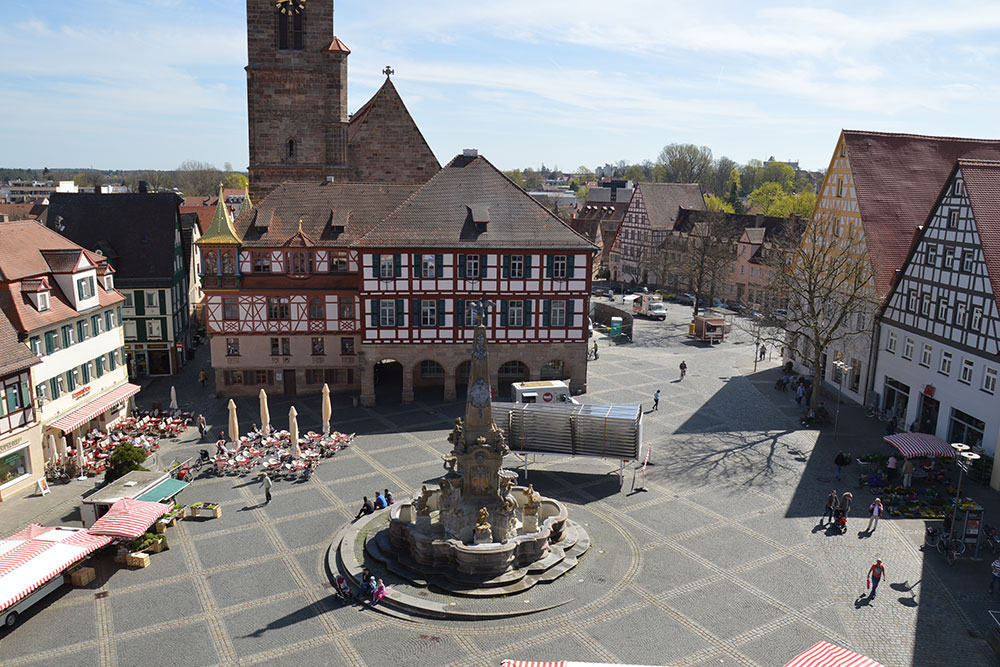
Image Königsplatz: Wikipedia | © Stadt Schwabach

Image Castle Ratibor: Wikipedia | © GZoST
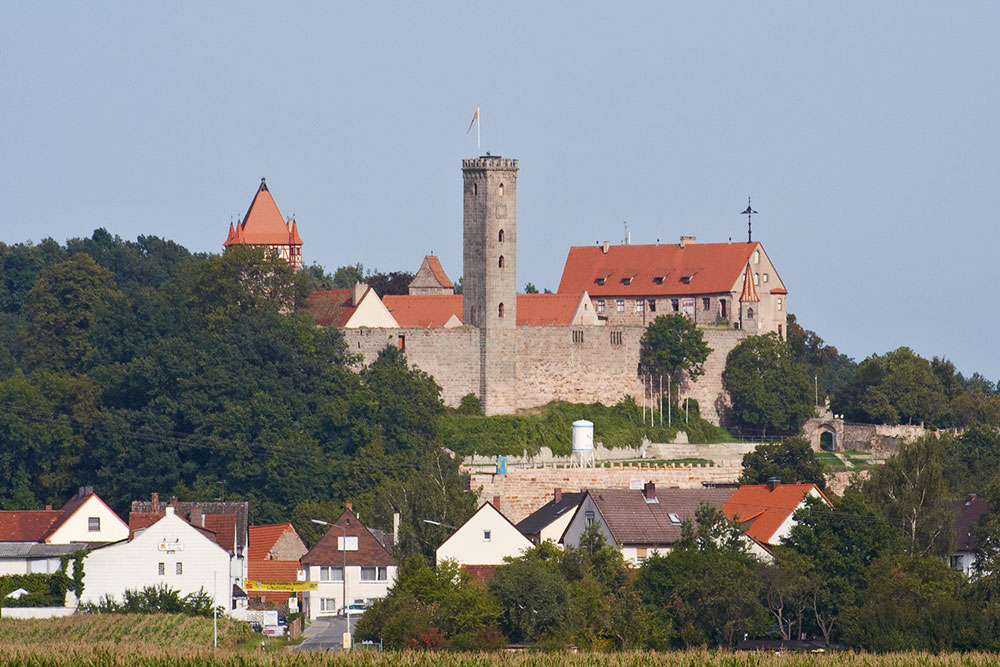
Image Castle Abenberg: Wikipedia | © jailbird
Besides Nuremberg the towns Schwabach, Roth and Abenberg lie in the immediate vicinity of Rednitzhembach.
The goldbeater town Schwabach is famous for its beatgold and was granted a town charter as early as 1375 AD. The medieval market place woth the town hall is one of the most beautiful in Franconia. One of the town hall’s peculiarities is not only the golden hall, decorated by more than 14,000 pieces of Schwabach beatgold, but also the gilded roof. The art of the goldbeaters can still be admired today in the goldbeater-showroom next to the „Goldenes Ei“ (Golden Egg). The brilliant festivals in the summer months like the Wirtefest (innkeeper’s festival) in June or the Bürgerfest (citizen’s festival) in July are also highly recommended (www.schwabach.de/de/).
The medieval town Roth with the margrave castle Ratibor and the nearby Rothsee is also worth a trip. Roth was once a centre for the production of Leonic goods and well known for its Christmas decoration. At the Rothsee there has been a famous and important sports event every year since 1989 – the Roth Challenge (www.challenge-roth.com). Athletes from all over the world meet in June to prove their extraordinary performances in 3.8 km swimming in the Main-Donau-Kanal, 180 km bike riding and 42.2 km running alongside the canal and through Roth. Besides sports the town of Roth (www.stadt-roth.de) offers also important cultural events. The Rother Bluestage in April or the asparagus festival in May are always worth a visit.
Directly on the Burgenstraße (castle road) lies the town Abenberg (www.abenberg.de) with the landmark silhouette of two towers – the slim „Luginsland“ and the massive „Schottenturm“ of Abenberg castle. Marienburg monastery and the old city wall with its towers and the historic prison give Abenberg its typical medieval touch. So in this ambience you find medieval events like the Feurtanzfestival (fire dance festival) or the Burgweihnacht (Castle Christmas). At the first weekend in Advent the wonderful Christmas market at the foot of the castle gives a romantic atmosphere. Regarding sports Abenberg has a 95 ha golf facility with an international 27 hole championship course (PAR 72).
Fränkische Schweiz (Franconian Switzerland)

Image Basilica and Castle Gößweinstein from IndiraFoto at Pixabay

Image Pottenstein Castle Ruin by Wolfgang Eckert at Pixabay

Image Rock Franconian Switzerland by Wolfgang Eckert at Pixabay
Hiking in the White Jurassic geological formation
(about 82 km by car / 1.5 Hours by train)
150 million years ago, north of Nuremberg and extending to Bamberg, a beautiful formation of mountains and hills arose in the „White Jurassic“ – called the Fränkische Schweiz (Franconian Switzerland). It is one of the oldest recreation areas in Germany and easily approachable via the autobahn A73 in direction Bamberg or by VGN public transport. Besides distinctive formations of lime and dolomite rocks for climbing and fascinating caves to discover, you can also go on extended hikes and find a multitude of castles and ruins.
Ideal starting points for experiences of nature or cave and castle hikes are the following towns:
Apart from hiking the Fränkische Schweiz is ideal for climbers. With more than 6,500 routes it is one of the best developed climbing areas in the world (Spiegelfels, Pfarrfelsen, etc.)!
But the Fränkische Schweiz is world record holder in another field, too. There are about 70 breweries in the area, so there is no higher concentration of breweries in the world. The typical local beer is the „Dunkel“ (dark beer). But also „Helles“, wheat beer and pilsener can be extensively tasted in the inns or on beer tours.
The Altmühltal (Valley of the river Altmühl)
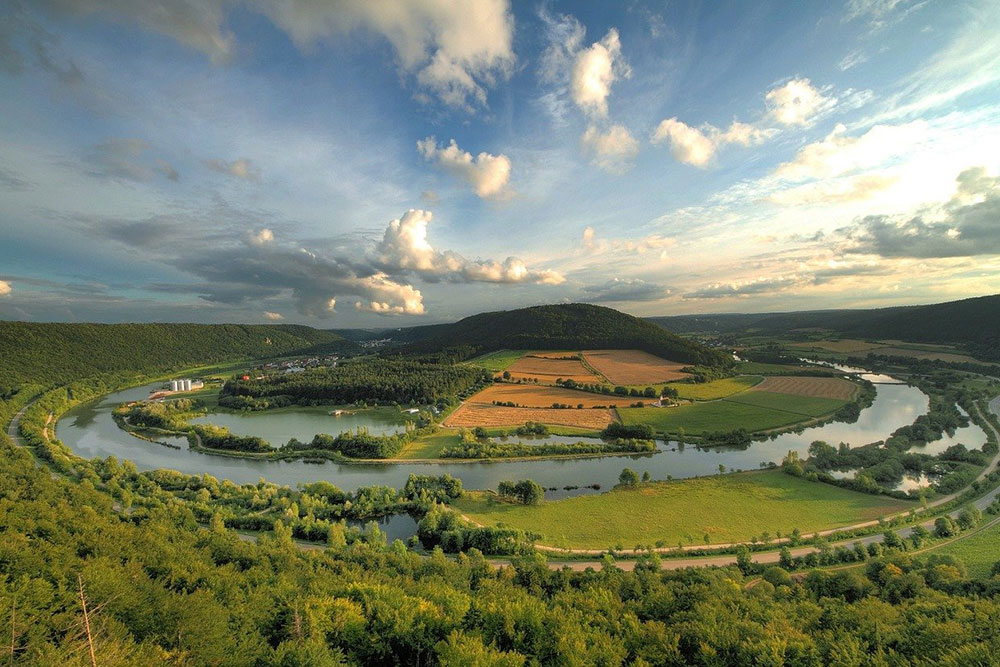
Image Loop of river Altmühl by Dieter Ludwig Scharnagl at Pixabay

Image Castle Prunn by Albrecht Fietz at Pixabay
Paddling, climbing and unique bike tours
West and south of Nuremberg the Altmühltal covers a wide river landscape with natural reserves and the Altmühltal cycle route, which is meanwhile 250 km long and one of the most popular bike routes in Germany.
Because of its purity and soft flow the Altmühl is perfect for canoeing and paddling tours, where you can directly enjoy the brilliant nature of the valley.
But also climbers get their money worth near the towns Dollnstein and Essing, very well known climbing areas and approachable via the B2 in direction Roth or by VGN public transport.

